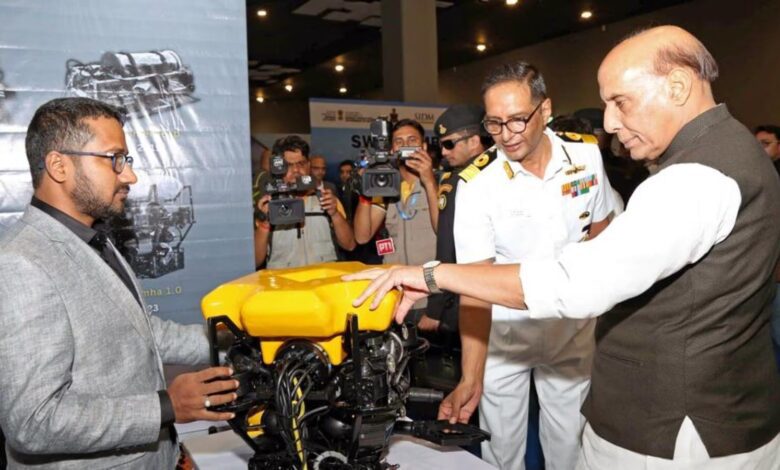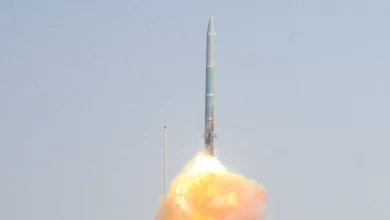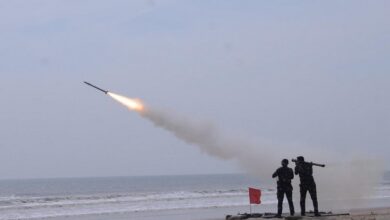India implements import ban on 98 weapons as part of self-reliance agenda
In his address, navy chief Admiral R Hari Kumar said Aatmanirbharta was no longer merely an economic imperative but a strategic necessity. “Dependence on others for one’s defence needs is a strategic vulnerability that must be overcome,” Kumar said.

India on Wednesday imposed an import ban on 98 weapons and systems, including futuristic infantry combat vehicles, shipborne unmanned aerial systems, medium-range precision kill systems, a variety of ammunition, radars, sensors, and equipment for fighter jets, maritime surveillance planes, warships, helicopters, and tanks. India is pursuing an ambitious agenda to achieve self-reliance in the defense manufacturing sector.
In an effort to become self-sufficient in the production of weapons, India has published a new list of 98 weapons on which imports are prohibited.
On Wednesday, October 4, at the plenary session of “Swavlamban 2.0,” the two-day conference of the Naval Innovation and Indigenisation Organization (NIIO), Defense Minister Rajnath Singh announced the so-called “positive indigenisation list.”
The list also includes next-generation low-level light radar for the army, futuristic infantry combat vehicles, articulated all-terrain vehicles, remotely piloted airborne vehicles up to 25 km with a 2 kg payload for the army, naval shipborne unmanned aerial system, medium upgrade low endurance class tactical drone, and an electric light vehicle for the army.
This was the sixth indigenization list the ministry had published in the previous three years, and a total of 509 defense products were included on it.
The defence ministry released a statement in which it stated that “the list lays special focus on import substitution of major system components, besides important platforms, weapon systems, sensors, and munitions, which are being developed and likely to translate into firm orders in the next five to 10 years.”
The items on the list, according to the statement, “will give the domestic industry ample visibility and opportunity to understand the trend and futuristic needs of the Armed Forces and create necessary R&D and manufacturing capacity within the country.”
“The list lays special focus on import substitution of components of major systems, besides important platforms, weapon systems, sensors and munitions, which are being developed and likely to translate into firm orders in the next five to 10 years,” the defence ministry said in a statement. The list has been prepared by the department of military affairs.
In his address, navy chief Admiral R Hari Kumar said Aatmanirbharta was no longer merely an economic imperative but a strategic necessity. “Dependence on others for one’s defence needs is a strategic vulnerability that must be overcome,” Kumar said.
The Department of Military Affairs compiled the list.
India’s reliance on foreign weapons India, which continues to be one of the world’s top importers of weapons, significantly relies on foreign defense producers to meet its security requirements.
To reduce import prices and increase defense manufacturing, it introduced the import restrictions list around three years ago.
Between 2018 and 22, Russia continued to be India’s top supplier of arms, dominating the country’s arsenal.
French suppliers ranked second between 2018 and 22 according to the Swedish think tank Stockholm International Peace Research Institute (SIPRI).
India was the greatest weapons export market for three nations—Russia, France, and Israel—among the top 10 arms exporters for the years 2018 to 22. It was also South Korea’s second-largest export market after India.
The third-largest market for South Africa, which was rated 21st among weapons exporters, was India.
On the basis of significant changes to support sector development, India declared in May that the value of defense output in the nation had for the first time surpassed 1 lakh crore. In comparison to FY 2021-22’s 95,000 crore and FY 2022-23’s 54,951 crore, the amount was 1,06,800 crore in FY 2022-23.
The country’s priorities include increasing exports as well as reducing its reliance on imports.
Due to legislative changes and reforms, India’s military exports have substantially increased while imports have decreased. Between 2013–14 and 2022–23, exports increased 23 times (from 686 to 16,000 crore), whereas the amount spent on imported weapons and systems decreased from 46% of overall spending in 2018–19 to 36.7% in December 2022.
Please, also have a look into : The role of the new Arunachal Tunnel in enhancing India’s military preparedness


